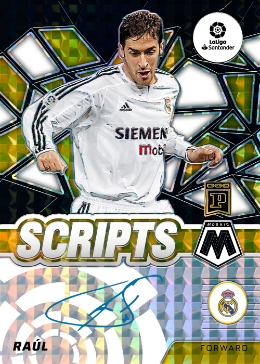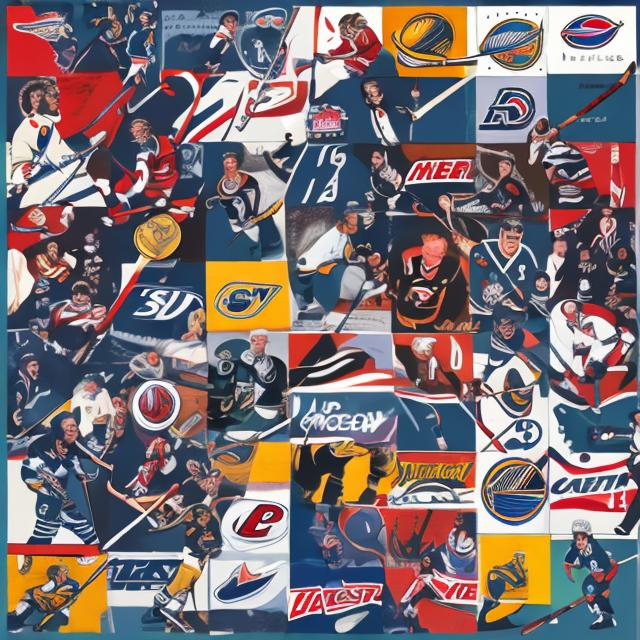NFT (Non-Fungible Token) sport cards have become increasingly popular in the digital world. They offer a unique ownership experience for sports fans and collectors alike. If you want to sell your NFT sport cards, here’s a step-by-step guide to help you navigate through the process effectively.
Step 1: Understanding Sports NFTs
Educating Yourself for Success in Selling NFT Sports Cards
In the fast-paced and ever-evolving world of NFTs (Non-Fungible Tokens), venturing into selling NFT sports cards can be an exciting and potentially lucrative endeavor. However, before diving headfirst into this digital collectibles market, it’s essential to lay a solid foundation of knowledge. In this comprehensive guide, we’ll walk you through the crucial steps to educate yourself effectively.
The World of Sports Card Collecting: A Rich Tradition
Sports card collecting is a time-honored hobby that has captured the hearts and imaginations of enthusiasts for generations. Whether you’re a seasoned collector or a newcomer intrigued by the prospect of NFT sports cards, it’s essential to understand the rich tradition that underpins this captivating pastime.
A Glimpse into the Past
The origins of sports card collecting can be traced back to the late 19th century. During this period, tobacco companies began inserting small cards featuring baseball players into their cigarette packs. These cards, often considered the pioneers of the sports card industry, became highly sought-after collectibles.
The Golden Age of Baseball Cards
The early 20th century marked the “Golden Age” of sports card collecting, primarily driven by baseball cards. The T206 Honus Wagner card, produced between 1909 and 1911, stands as one of the most iconic and valuable cards in history. This era saw the emergence of notable card manufacturers like American Tobacco Company and the Goudey Gum Company, contributing to the popularity of the hobby.
The Impact of Technology
As technology advanced, the sports card industry evolved as well. Printing techniques improved, allowing for more vibrant and detailed card designs. In the mid-20th century, Topps emerged as a dominant player in the industry, producing a wide range of baseball cards that remain cherished by collectors.
The Rise of Other Sports
While baseball has always been at the forefront of sports card collecting, other sports gradually found their place in the hobby. Football, basketball, and hockey cards gained popularity, creating diverse and passionate collector communities.
Grading and Rarity
One of the defining characteristics of sports card collecting is the emphasis on card condition and rarity. Professional grading services assess the condition of cards and assign them a grade, which significantly impacts their value. Cards in mint condition and those featuring rare players or limited editions often command premium prices.
Collector Communities and Fandom
Sports card collecting fosters a sense of community among collectors. People from all walks of life come together to celebrate their shared passion for both the sports and the cards themselves. The exchange of stories, knowledge, and cards creates a unique camaraderie.
The Digital Evolution: NFT Sports Cards
In recent years, the sports card collecting world has witnessed a digital revolution with the advent of NFT sports cards. These digital collectibles, built on blockchain technology, offer a new dimension to the traditional hobby. NFT sports cards retain the essence of rarity and ownership while embracing the digital age.
Step 2: Choose the Right NFT Marketplace
Choosing the right NFT marketplace for selling sports NFTs is crucial to your success as a seller. Each marketplace has its own features, user base, and fee structures, so it’s important to carefully consider your options. Here are some factors to consider when selecting the right NFT marketplace for your sports NFTs:
Popularity and User Base:
Look for marketplaces with a large and active user base. Platforms like NBA Top Shot and Candy have a broad reach and are well-known in the NFT Sports community, which can help attract buyers.
Sport Focus:
Some marketplaces specialize in specific sport. If your sports NFTs cater to a particular sport or types of sports collectibles, consider platforms that align with your niche. For example, NBA Top Shot focuses exclusively on basketball NFTs.
Ease of Use:
Consider the user interface and user experience of the marketplace. An intuitive and user-friendly platform can make it easier for buyers to discover and purchase your NFTs.
Community and Promotion:
Some marketplaces have active NFT sports communities and promotional opportunities. Look for platforms that offer features like social feeds, community engagement, and promotional events to help boost your NFT sales.
Step 3: Set Your NFT Price
Defining the market price for an NFT (Non-Fungible Token) can be a complex process influenced by various factors, including demand, rarity, artist reputation, and current market trends. Here’s a step-by-step guide on how to determine an appropriate market price for your NFT.
Research Comparable NFTs
Begin by researching similar NFTs within your niche or category. Look for NFTs with similar attributes, such as sport, style, rarity, and utility. Pay attention to NFTs that have recently sold to gauge current market values.
Evaluate Rarity and Scarcity
Rarity is a significant driver of NFT prices. Assess the scarcity of your NFT by considering factors like limited editions, unique features, or properties that set it apart from others in the market.
Set Realistic Expectations
Be realistic about your NFT’s value. While it’s natural to aim for a high price, setting it too high may deter potential buyers. Balance your expectations with market conditions and the perceived value of your NFT.
Step 4: List Your NFTs for Sale
After determining the price, you can now list your NFT sport cards for sale on the chosen marketplace. Fill in the necessary details, such as the card’s name, description, condition, and any other relevant information that can increase its appeal. Provide high-quality images or videos of the sport card to showcase its uniqueness and attract potential buyers.

Step 5: Promote Your NFT Sport Cards
In order to increase visibility and attract more potential buyers, it’s crucial to promote your NFT sport cards. Leverage social media platforms relevant to the sports community, such as Twitter, Instagram, and sports-related forums. Engage with the community, share updates about your cards, and collaborate with influencers or collectors who can help spread the word about your NFTs.
If you are looking to promote your NFT sport cards, here are some strategies you can consider:
Use social media: Share images and information about your NFT sport cards on platforms like Twitter, Instagram, and Facebook. You can even create a dedicated account for your NFTs to gain a following and engage with potential buyers.
Collaborate with influencers: Reach out to influencers in the sports or NFT community and invite them to review or feature your NFT sport cards. This can help increase visibility and credibility for your NFTs.
Promote on Sports or NFT Platforms: Promote your card on popular Sports or NFT Forums. Search for NFT sports fans and connect with it.
Participate in NFT marketplaces: List your NFT sport cards on popular NFT marketplaces like Panini, Rarible, or NBA Top Shot. Make sure to optimize your listing with an attractive title, description, and high-quality images.

Remember, effective promotion is key to successfully selling your NFT sport cards. It’s important to be proactive and get your NFTs in front of potential buyers and collectors.
Step 6: Manage Negotiations and Sales
As inquiries and offers come in, be responsive and engage with potential buyers promptly. Consider negotiating if necessary, though be mindful of the value you’ve set for your NFT sport cards. Once you finalize a deal, safely transfer the ownership rights to the buyer’s digital wallet. Follow the marketplace’s guidelines to ensure a secure and smooth transaction for both parties involved.
Step 7: Stay Informed and Adapt
Lastly, continue to stay informed about the NFT market trends, new opportunities, and changes within the industry. Keep an eye on the market demand for certain players or issues related to digital collectibles. Be ready to adapt your selling strategy accordingly to maximize the value of your NFT sport cards.
Selling NFT sport cards is a unique way to monetize your passion for sports and digital collectibles. By following this step-by-step guide and staying active in the NFT community, you can effectively sell your NFT sport cards and seize the opportunities offered by this emerging market.

